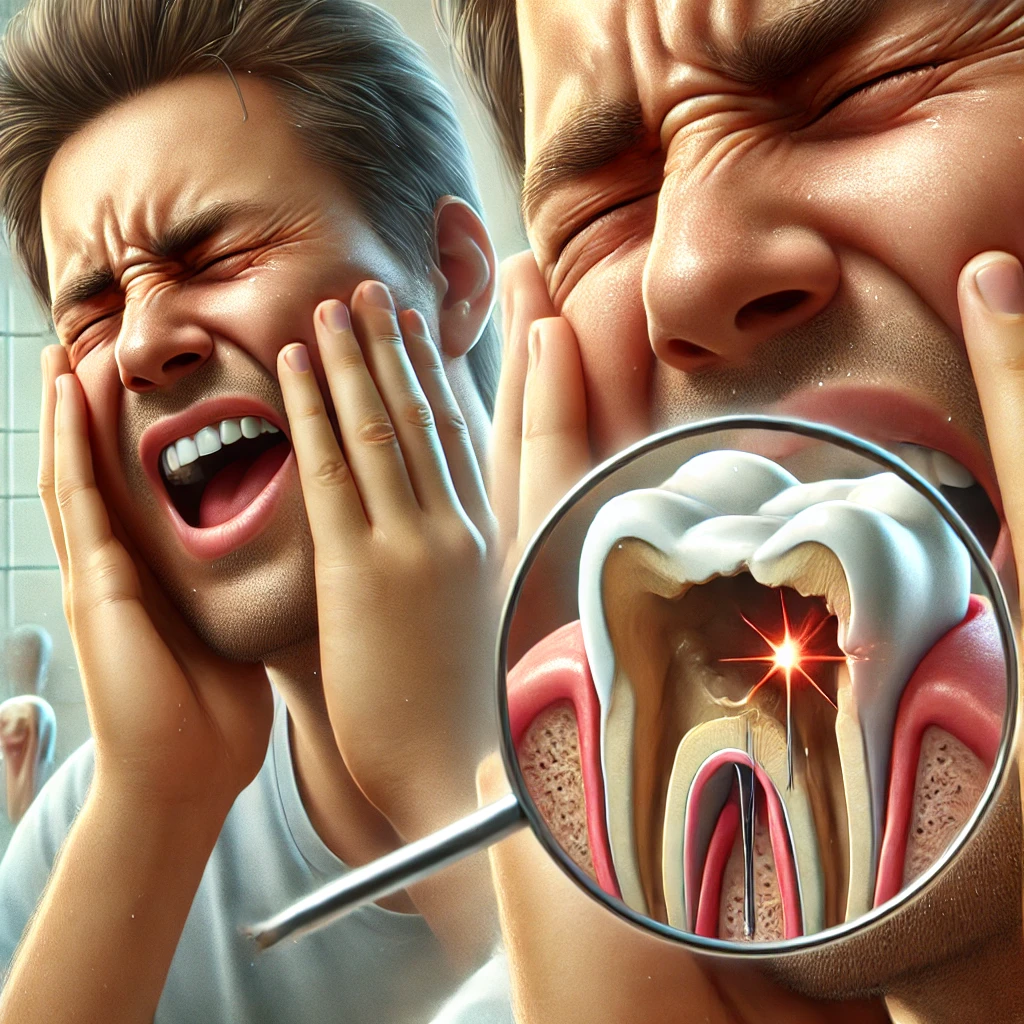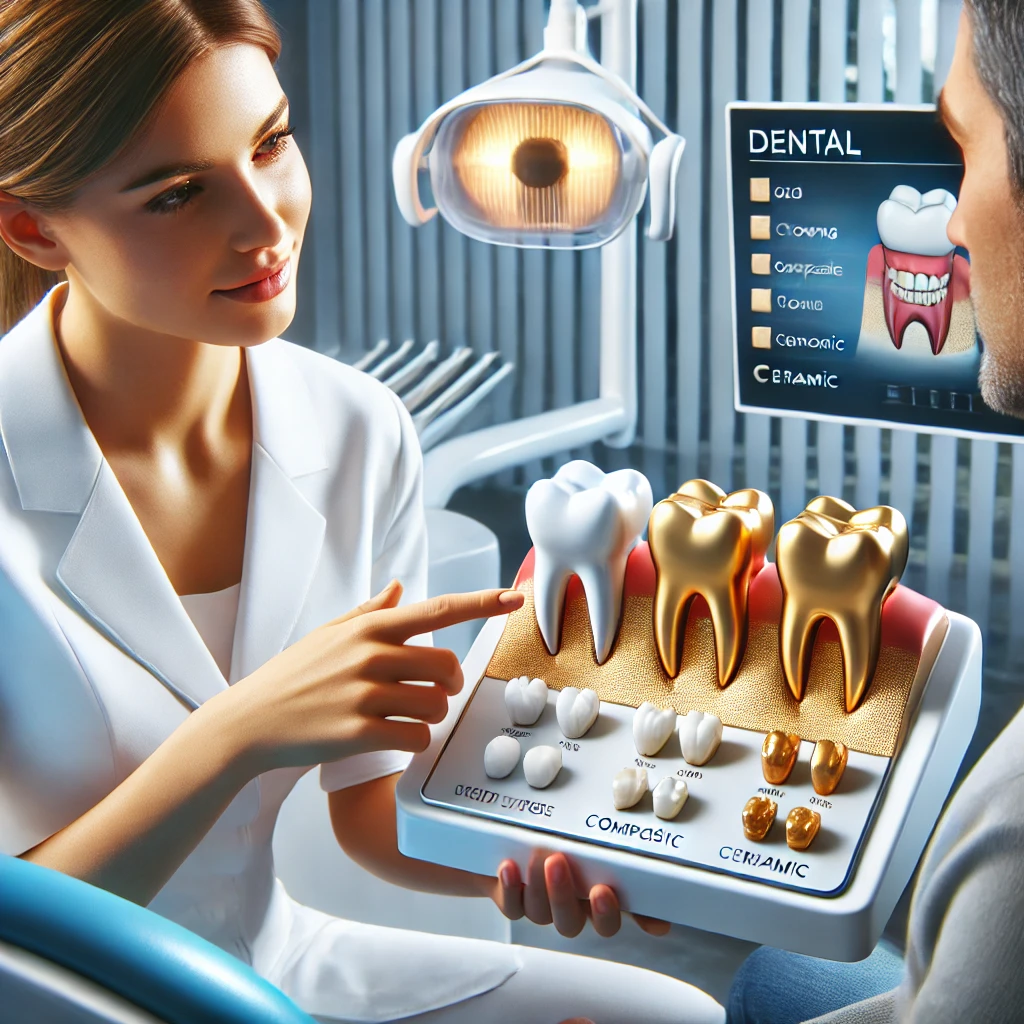Introduction
With all their sophisticated eating habits most people today face problems with sensitive teeth or cavities that push them into sleepless painful nights. A visit to the dentist would suggest dental filling that could be a permanent relief from pain. A dental filling is one of the oldest ways to restore decayed teeth by filling the cavities. a problem with your dental fillings?
Dental fillings help to fill, cover, and protect the inner tooth from further bacterial infections and further decay and pain. Though dental fillings are considered to be tooth restorations that would allow one to chew and grind the food properly for easy digestion, sometimes these durable tooth fillings become loose. Loose fillings could expose the teeth once again to infection and trigger swelling and pain.

Reasons for dental fillings coming loose
Though your doctor recommends dental fillings to be the best solution to get relief from tooth decay and pain, they may get damaged due to stress or trauma, or tooth decay. The dental fillings may become loose due to:
- Decay of the filled tooth
- Worn out and old
- Bite hard foods such as nuts, and ice chips.
Signs that tell you to have a loose filling
Visible signs
Whenever you go for your regular dental check-up, your dentist will usually do a visual examination of your healthy and damaged teeth. If the dentist finds black spots or holes, it will be considered a damaged loose filling. If there are gaps between the filling and the tooth, it will be also considered a sign of loose filling.
Rough surface
If your tongue can feel the surface of the filling rough, it is also a sign of loose filling, and it needs to be replaced to prevent further tooth decay.
Sensitive and painful
If you feel sensitive or tingling pain while drinking cold or hot drinks, or eating sweet food items, it may be due to loose filling of your damaged inner tooth. If you experience severe or mild toothache throughout the day or while going to bed, it may also be due to loose filling. Sometimes pressure while chewing the food may also cause loose fillings.

Dealing with Loose Filling
A loose filling might expose your inner tooth to heat, cold, pressure, and harmful bacterial infections and make you feel uncomfortable with pain and uneasiness. The inflammation may irritate the nerves and dentin and make you feel sensitivity and sharp pain in the damaged tooth.
Sometimes, food particles may stay in the gap of your tooth filling. The harmful bacteria may find it as their source of energy and spread infection and further decay of your tooth.
- The movement of the loose filling may turn the damaged tooth sore, irritated, and sensitive. Gargle your mouth with a warm salt solution to get immediate relief. Even applying clove oil may give you temporary relief before visiting your dentist.
- Oral problems may make you feel stressed and irritated. An immediate visit to the dentist would save you from pain and uneasiness.
- Once you realise you have loose filling it is better to have mouthwash after every meal and gargle with an antiseptic mouthwash.
- Fix an appointment with your dentist and get your problem solved. Your dentist would be the right person to decide what could be done to relieve you from pain.
Treating Loose Filling
When you come across common signs of a loose filling, it is better to schedule an appointment with your dentist and get it resolved immediately. Before visiting the dentist, it is better to brush your teeth and gargle with an antiseptic mouthwash to control the bacterial infection.
If you experience sharp, tingling pain, use an ice pack to numb the pain. If your dentist had prescribed medicines to control pain on your earlier visit, you can also take them to get immediate relief from the pain. These can be temporary remedial measures for treating loose filling. But it is always best to visit your dentist and get the loose filling treated. Your dentist would get your loose filling removed or cleaned or fill it with the new dental fillings.

Preventing Loose Filling
You cannot rely on dental fillings forever because they are not permanent solutions. Dental fillings may stay good for only from 2 to 10 years. Following preventive measures may help you to improve the durability and structural integrity of your tooth filling.
- Follow good oral practices – brushing and gargling regularly
- Avoid biting or chewing hard food items
- Visit your dentist for a regular check-up
- Opt for a dental crown for a permanent tooth restoration
A dental filling may not be a permanent solution as it may become loose in the long run. If your dentist suggests a dental onlay or a dental crown as a durable, permanent method for restoring your damaged tooth, it is always best to choose it. The dental onlay method would not only fill the damaged tooth, but it would also support the outer structure of your tooth.
Choosing Durable Dental Fillings
As a solution to loose filling, your dentist may suggest permanent dental fillings that will help you to be free from pain and sensitivity. Depending on the type of material used, the cost of dental fillings may be less or more. Your dentist can decide on the type of filling based on the degree of tooth decay. Cast gold crowns, amalgam fillings, composite resins, and ceramic fillings are some of the durable dental fillings. A dental crown is an artificial tooth that can be fit directly over an existing tooth.
Gold crowns are believed to be durable when compared to other alternatives. As gold expands and shrinks in different temperatures, it prevents teeth sensitivity and allows longer restoration. Gold fillings can maintain their integrity for years.

Dental amalgam fillings consist of powdered alloy made of silver, copper, tin, and liquid mercury. They are often called silver fillings and are considered durable and last longer. It may be a safe, effective restoration method for anyone aged six or older.
Composite resin fillings look natural as they are tooth-coloured. Your dentist may suggest it to be the best choice for filling cavities in the front teeth which can be easily visible while you talk or eat. This filling can last at least ten years and requires your dentist to follow precise steps before installation. Despite the complexity involved in this type of filling, it has been a popular choice.
Ceramic fillings have porcelain as their primary material and so they can match the exact colour and shade of any tooth. Though expensive as gold crowns, ceramic fillings are durable, more resistant to abrasion, and stains, and can last up to twenty years.
Conclusion
A loose filling on your tooth is more than an inconvenience for it may induce sharp pain, and uneasiness and spoil your day. It can lead to increased sensitivity of your tooth, decay of your already damaged teeth, and it may lead to root canal infection also.
There is no answer to the question of how long a tooth filling may last. It depends on oral hygiene habits, visits to dentists, and eating habits. In general dental fillings may last from five to ten years. Following proper procedures and precautions, you can make it last more than ten years. The cost of dental fillings may vary according to the material used. It also depends on how affordable it is to you. Dental fillings prevent cavities from spreading decay to other healthy teeth. A loose filling can be easily repaired with your immediate visit to your dentist.

FAQ
How do I know if my dental filling is loose or damaged?
If you experience tooth sensitivity, pain while chewing, or feel a rough surface with your tongue, your filling may be loose. A visible gap or a black spot near the filling also indicates damage.
How long do dental fillings last?
The lifespan of a filling depends on the material used:
Gold fillings: 15-30 years
Amalgam (silver) fillings: 10-15 years
Composite (tooth-colored) fillings: 5-10 years
Ceramic fillings: Up to 20 years with proper care
Can I eat after getting a dental filling?
Yes, but wait at least 24 hours before eating hard or sticky foods if you have an amalgam filling. Composite fillings harden quickly, so you can eat soft foods right away.
What causes a filling to fall out?
Fillings may loosen due to:
Tooth decay underneath the filling
Biting hard foods (e.g., nuts, ice)
Teeth grinding (bruxism)
Ageing of the filling material
Can I fix a loose filling at home?
Temporary solutions like dental cement or clove oil for pain relief can help, but you must see a dentist immediately to prevent infection or further decay.
Is replacing a dental filling painful?
No, dentists use local anesthesia to numb the area, ensuring a painless experience. You might feel mild discomfort after the procedure.
What happens if I don’t replace a lost filling?
Ignoring a missing or loose filling can lead to tooth infections, cavities, nerve damage, or even the need for a root canal. It’s best to replace it as soon as possible.
What is the safest type of dental filling?
Ceramic and composite fillings are considered the safest as they are mercury-free, tooth-colored, and biocompatible.
How much do dental fillings cost in the USA?
The cost varies based on material and location:
Amalgam (silver) fillings: $50-$150 per tooth
Composite (white) fillings: $90-$250 per tooth
Gold or ceramic fillings: $250-$4,500 per tooth
Can dental fillings prevent cavities?
Yes! Fillings restore decayed teeth and prevent bacteria from spreading. Good oral hygiene and regular dental visits help maintain them longer.

Growing up in an environment enriched with colours of nature adorned with sounds of machines, I enjoyed life with all challenges. Nature is always a great teacher that teaches empathy to live and let live others. Though I am now living in an urban environment, the lesson that nature taught me motivates and allows me to keep on writing. I will always remember the cool afternoons in the shades of trees that made me write more on love.